Water, water, everywhere…
Camping in the backwoods or traveling through Mexico means you’ll need clean drinking water all day, every day. Even if you’re surrounded by enough civilization that bottled water is readily and cheaply available, it doesn’t hurt to have a portable water filter or purifier for those days when all the stores are closed, or you’re too lazy to go outside, or you see someone filling up empty water bottles from the tap to be resold in stores again. Ew.
Luckily for all of us, portable water filters have actually gotten pretty great recently. And no, I’m not talking about the well-known options that have great marketing and cost hundreds of dollars and don’t filter out viruses dammit. Why do they cost so much if they still let bugs through that’ll kill me!? Argh!
The options I’m talking about are comprehensive filtration devices, with technology so good that they’ll handle even the tiniest of microscopic organisms, which most traditional backpacking filters can’t handle. You can fill up from a stagnant pond in sub-Saharan Africa and you’ll be just fine. And isn’t that lovely?
What kind of water filter or purifier do I need?

This is where it starts getting technical, but the way I look at it, there are three major categories of contaminants worth discussing:
- Chemical: Lead, arsenic, chlorine, and iodine come to mind. These are more often found in tap water than river water, so if you’re traveling abroad (or filtering at home), you’d want something that can help with these. Dirt and dust are important to remove as well, but pretty much every filter on the market will do that. I’m not aware of anything that’ll filter out all chemicals, but carbon filtration is the most common method for handling these, and is quite helpful.
- Bacterial (and bacterially-sized things): These are the most common biological contaminants, and the most important things to filter, whether you’re traveling to another country, or hiking in your own. There are other microorganisms out there that can cause illnesses (such as protozoan cysts, like giardia and cryptosporidium), but they’re similarly sized, so if a filter can handle bacteria, they can handle the other ones too.
- Viral: Viruses, the smallest organisms on earth, bypass most filters. Viruses are pretty rare, and generally only found in rural environments in developing countries. You probably don’t need viral filtration if you’re hiking through North America or Western Europe (which is part of the reason why filters that remove viruses are so rare), but…well, if it can do it, great.
Ideally, you’d want something that can handle all three, and that’s what this list is about. To the best of my knowledge, these are the best portable water purifiers on the market today. Significantly cheaper options exist, they won’t work nearly as well as these.
This list is split into two parts, starting with…
Part 1: If you need total filtration (including viruses)
The following devices offer all-in-one filtration, including large dirt particles, harmful chemicals, bacteria and bacterially-sized microorganisms (like cysts and giardia), and viruses. If you’re going to remote areas in developing countries, viral filtration is important; if you’re hiking around North America or filtering tap water in Western Europe, you probably don’t.
There are certain things they won’t remove (salt, for example), but the options listed here offer the most comprehensive filtration on the market, and you probably won’t find something that does. These will remove all harmful biological contaminants, and certain chemicals, making tap water or river water taste great, and safe to drink.
1) Lifesaver Bottle: $150
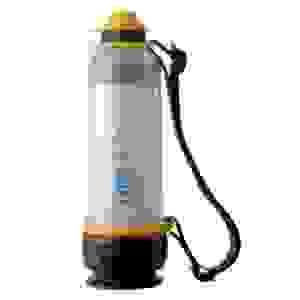
Update: It looks like the Lifesaver will be discontinued. I’m not entirely sure if this is temporary, but I’ll keep this updated if things change.
The Lifesaver Bottle was designed for the developing world, featuring an all-in-one portable water purifier that could provide clean drinking water for the 3 billion people that need it at a total investment of $20 billion. Makes you want to donate, doesn’t it?
As its design goals were simplicity and cost-effectiveness, it happens to suit the needs of backpackers and hikers just as well, and is readily available for purchase by first-world consumers, who are encouraged to participate in a buy-one, donate-one program.
The bottle has a filtration and pump system housed entirely within the bottle, so you pump a few times to press the water through the super-fine filter, and then you can drink. The bottle has a watertight cap, a carrying strap, has completely replaceable parts, and can even handle viruses.
For a while the Lifesaver was far and away the most cost-effective option on the market, though a couple new options have emerged that are lighter, don’t require pumping, and don’t need to be submerged upside down in a river to fill it up, like the Lifesaver does; but it’s still quite good.
The following numbers are estimates for the $150 Lifesaver Bottle 4000, with a limit of 4000 liters, and assume high-frequency replacement of carbon filters, available in $30 packs of 4 which treat 250 liters each. The 6000 liter version and carbon filter value packs can reduce the long-term costs listed below by about half.
- Unit price: $150 (4000 liter version)
- Replacement parts: $100 per cartridge, $8 per carbon filter, $6 per pre-filter
- Lifespan: 4000 liters (carbon filters need more frequent replacement)
- Initial water treatment cost: $0.06 per liter
- Recurring water treatment cost (replacement cartridges + filters): $0.05 per liter
- Empty weight: 22 ounces (623 grams)
Buy it here.
2) The Grayl Ultralight: $60
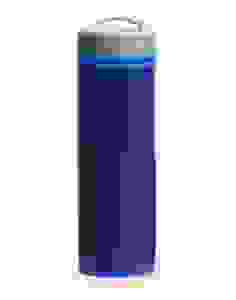
Frequently referred to as the Holy Grail of water purifiers (doesn’t everyone love puns?) the Grayl was designed by someone who got tired of drinking from sporty bottles with gigantic logos and flashy colors. This one offers the same great filtration performance as anything else you’ll find, but without the need for pumping, sucking, squeezing, or waiting.
The filter mechanism works like a French press; you fill up the lower chamber, and press the upper unit down into it. It takes about 15 seconds, after which you can drink just like you would from a regular bottle, without having to suck up the water through a straw. It also means you can pour out purified water into a cup for a friend, or fill up spare bottles for a long trip, and you’ll be hauling clean water around with you, instead of dirty water.
The Grayl has multiple filter unit options which can be swapped out according to your needs, including a low-cost tap water filter, or the top-of-the-line Purifier cartridge, which can handle viruses (removing 99.9999% of them), and 99.9999% of bacteria, along with other microorganisms and chemicals, with a 150 liter lifespan. From what I have seen, its filtration quality is the best of anything on this list.
The numbers below are for the Purifier cartridge, which is what you’d want for outdoor backpacking or international travel.
Full disclosure: They’ve provided me with some free test samples, and, years after the reviews, made me a revenue-sharing offer as well. But I like it a lot. Check out a very in-depth review here.
- Unit price: $60
- Replacement parts: $25 per cartridge (Purifier)
- Lifespan: 150 liters
- Initial water treatment cost: $0.40/liter
- Recurring water treatment cost (top-of-the-line Purifier unit): $0.16/liter
- Empty weight: 10.9 ounces (309 grams)
Buy it from TheGrayl.com.
3) Aquamira Frontier Bottle (Red Line): $50
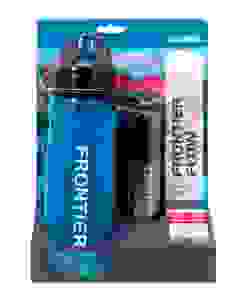
This is a recent upgrade to a previous Aquamira bottle; the new ones adds viral protection (in addition to chemical and bacterial and other microorganisms), making it seriously effective anywhere in the world.
Because it’s a recent modification to the Aquamira lineup, you’ll need to make sure it specifies viral protection (if that’s what you need, of course), and the replacement filters will be labelled Red Line. The bottle has other replacement filters, such as Green Line, but that’s for non-viral filtration (good for hiking in North America, and significantly cheaper, so it’s useful that you can swap them out as needed).
The numbers listed here are for the Red Line filter, to provide a direct cost comparison with the other top-of-the-line filters listed here, and the numbers are pretty great. It removes chemicals, 99.9999% of bacteria, and 99.999% of viruses and other microorganisms, with a 450 liter lifespan. The squishy straw is the type of thing that might need to be cleaned out every once in a while, but that’s true of most bottles anyway.
Full disclosure: The manufacturer has provided me with a few test products (though not this particular item), but all these numbers are accurate.
- Unit price: $50
- Replacement parts: $40 per cartridge (Red Line filter)
- Lifespan: 450 liters
- Initial water treatment cost: $0.11 per liter
- Recurring water treatment cost (cartridges): $0.08 per liter
- Empty weight: 5.6 ounces (158 grams)
Get it here.
They also make an in-line filter for attaching to a hydration bladder hose, which offers the same virus-removing performance, and is (at the moment) the only one I know of that does that.
4) Water to Go Bottle: $40 (approximately)
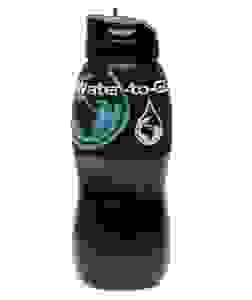
This is another one that might require overseas shipping, depending on where you live, but even with British pound conversion and international shipping costs, it’s still rather affordable.
The Water to Go Bottle removes 99.9% of biological contaminants (including viruses) and certain harmful chemicals, using a NASA-developed technology that removes particles from the water without using a “real” filter, but through a process called adsorption, though it also includes a carbon component for soaking up chemicals.
(The site claims it removes 99.9% of all microbiological contaminants, but elsewhere on the site they’ve listed the test results, which put both virus and bacterial removal at 99.9999%, and other types at 99.99%. I’m not sure what the 99.9% refers to.)
There’s a smaller bottle available as well, but the numbers here are for the one in the photo. Prices on their site are listed in British pounds, and the numbers here assume a conversion rate of 1 British pound equal to 1.5 American dollars, and don’t take into consideration the international shipping costs:
- Unit price: $37.50
- Replacement parts: $13.5 per cartridge
- Lifespan: 200 liters
- Initial water treatment cost: $0.18 per liter
- Recurring water treatment cost (cartridges): $0.067 per liter
- Empty weight: 4.8 ounces (138 grams)
Get it here.
5) Katadyn MyBottle: $60
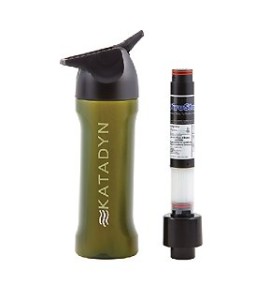
The Katadyn MyBottle uses a combination of filtration and iodine purification, to remove particles, and kill whatever microorganisms are inside. This is highly effective, but means the water will taste like iodine. This used to be the standard method for hikers everywhere, but some of the newer models, such as those listed above, manage the same level of safety without any added chemicals, which is likely to be a preferable solution for most people.
But it works, so I’m including it here, as it came in quite handy for me on trips through Eastern Europe and South America, and it’s quite simple. Besides, I don’t think it tasted so bad. I think it has been bested by some of the newer models out there, both in terms of non-iodine performance and cost-effectiveness, but it’s still quite functional, particularly if you use it only occasionally, in which case its moderately-cost-effective performance won’t add up too much.
- Unit price: $60
- Replacement parts: $35 per cartridge
- Lifespan: 150 liters
- Initial water treatment cost: $0.40 per liter
- Recurring water treatment cost (cartridges): $0.23 per liter
- Empty weight: 10 ounces (283 grams)
Buy it here.
If you DON’T need total purification
So this probably sounds horrifying, but there are a couple systems worth mentioning that only provide partial filtration, specifically focusing on removing biological contamination, which is the type of thing that works perfectly fine for hikers, but is not necessarily ideal for travelers, who will run into metallic tap water and maybe a virus or two. But if you’re hiking in North America, these might work for you:
7) SteriPEN Water Purifier systems: $100 (depending on the model)
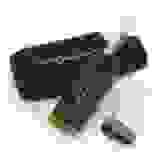
Although I much prefer all-in-one systems contained within the bottle, this is a popular device for backpackers all over the world, so I thought I’d discuss it here.
The important thing to remember is that the SteriPEN kills the microorganisms in the water with UV light, but does not actually remove them; it’ll be safe, but you’ll drink them right up. This also means it won’t remove chemicals, metals, particles, or anything else.
It’s possible to combine this with extremely cheap carbon filter bottles, which only remove large particles and certain chemicals, and thus combining them together would provide a more complete system. The Camelbak Groove and Brita water bottles come to mind.
You also need to use clear water, because the UV light will get blocked by sediment. You really don’t want to use this on muddy water, ever. You don’t want to use any filter with muddy water, but the other filters will actually clean it, which will damage the lifespan of the filter, but drinking muddy water with a SteriPEN might damage the lifespan of you.
The SteriPEN claims battery life long enough to clean 100 liters with 4 AA lithium batteries (about $2 each), which could be even cheaper with rechargeables (seriously, why does no one use rechargeable batteries?). The manufacturer will replace the bulb for $60, so the combined cost is still fairly cost-effective over long periods, but again, you’d need a separate filter if you wanted to remove metals, chemicals, and other stuff.
- Unit price: $100
- Replacement parts: $60 bulb, batteries of varying cost
- Lifespan: Approximately 8,000 liters (bulb lifespan)
- Initial water treatment cost (SteriPEN + 4 AA lithium batteries): $1.08 per liter
- Recurring water treatment cost (batteries + bulbs): $0.10 per liter
- Weight: 4 to 8 ounces with batteries, depending on the model (115 to 230 grams)
Buy it here.
8) The Sawyer Filter Bottle: $50
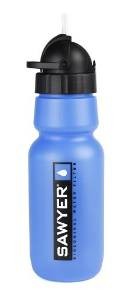
I have pointed out on many occasions that if you are only hiking in North America (and other places where viruses aren’t a problem), this is probably the best option out there.
The Sawyer bottle has a 0.1 micron filter size, which is good for everything biological except viruses, and it won’t handle chemicals, either, so it’s no good for low-quality tap water; but it’ll handle 99.99999% of bacteria, along with other bacterially-sized microorganisms (cysts, protozoa, etc), which works just fine for filling up from a river in the mountains, and is guaranteed to last for 3.7 million liters (minor note: these claims have been put to the test, and have been shown to come up short; it’s probably best to replace the filter long before the lifespan guarantee runs out).
There’s the arguable advantage of having something all-in-one, which can handle hiking and international travel and icky tap water, and some people might prefer that sort of minimalism; but if all you need is something for outdoorsy North American recreation, this is a good one.
- Unit price: $50 (though frequently found on sale)
- Replacement parts: None; buy the whole thing again
- Lifespan: 3.7 million liters (as mentioned, this claim is not sufficiently backed with evidence; it’s probably best to use it for a few months, just like the others)
- Initial water treatment cost: $0.000013/liter
- Recurring water treatment cost: $0.000013 per liter (as mentioned, it won’t last as long as they say, so this number should really be much higher)
- Weight: 5.5 ounces (155 grams)
Get it here.
There’s an in-line filter as well, for attaching to a hydration bladder, which offers the same performance.
Final thoughts
As you may have noticed, I’m a big fan of all-in-one designs. With the exception of specialized devices like the Sawyer Bottle and SteriPEN, all the options on this list can handle chemicals, bacteria and bacterially-sized things, and even those pesky little viruses (though with varying removal rates), though I would recommend using the ones with the highest removal rates if you’re going somewhere seriously questionable. Other pros and cons include some with great long-term cost-effectiveness, while others might offer swappable filters for low-grade filtration in less risky areas, and others might just fit better in your cup holder. A lot of this comes down to personal preference and ease of use, but performance is worth taking into consideration as well. But for reasons related to performance and ease of use, I’m sticking with the Grayl for now.

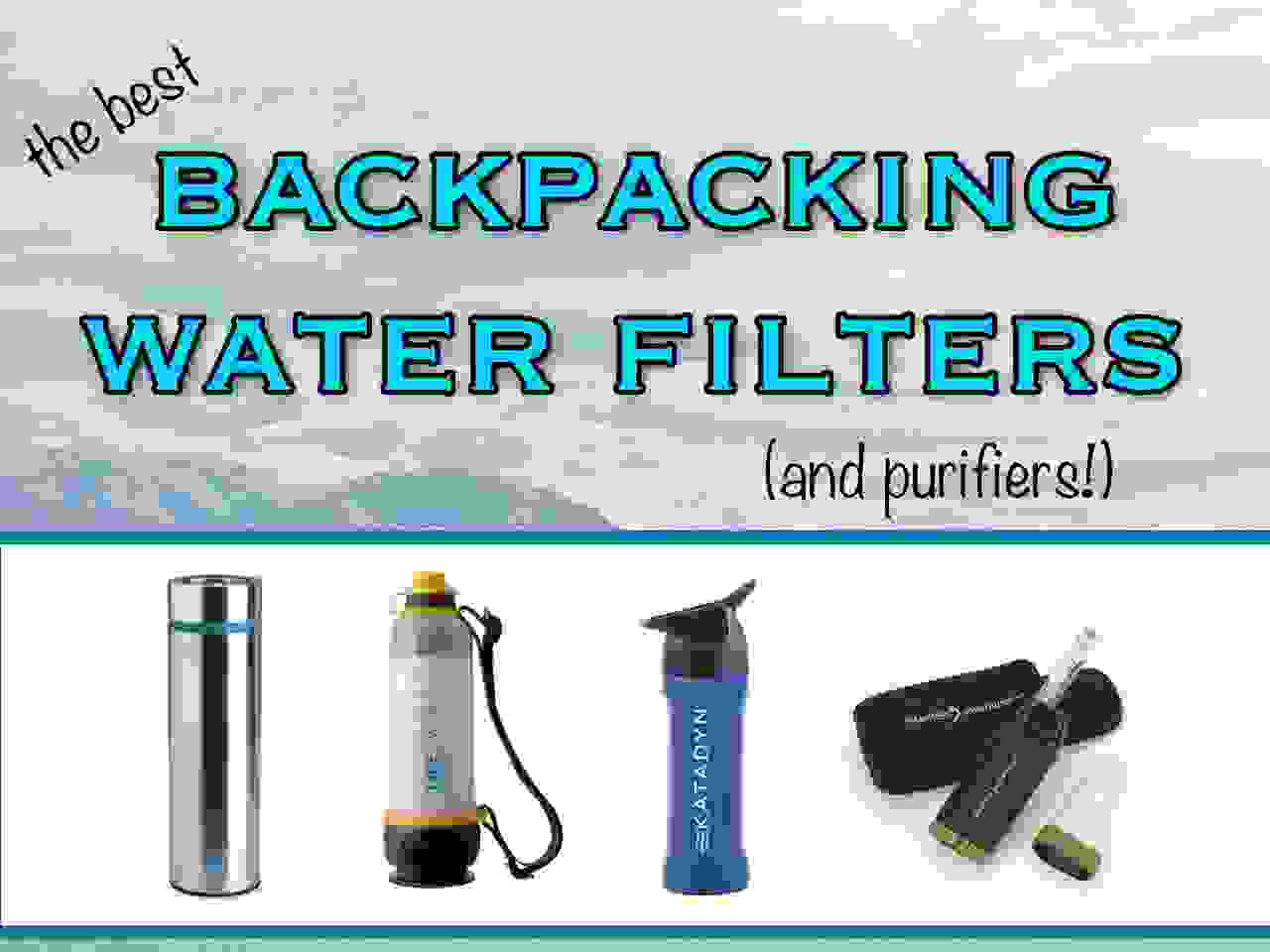



No mention of the AquaPure Traveller from Pure Hydration
Been around 20 years, bottle virus protection as standard, lasts at least 350 litres, instantly no moving parts no pumping etc etc
Lifesaver is really not practical for most people
If you post I will be surprised
Regards Jim
BTW, great post and I appreciate your insight. The family and I are moving to Indonesia for 3 years, and we’ll travel throughout several islands, such as: Java, Bali & Lombuk.
Any suggestions? I’m thinking LifeSaver but I don’t know if there’s anything better for a family of 5. Thanks in advance for your input.
Going somewhere for 3 years automatically makes me want to recommend the Lifesaver. The filter lasts for 4000 liters, or 6000 if you get the pricer version, so you don’t have to worry about importing filter replacements, though I’d probably recommend bringing replacements for those carbon pre-filters, as they last a shorter time, but they’re pretty small.
The Grayl is the easiest to pour out for other people, but I think if you’re stuck on the other side of the planet for 3 years without always having an easy mailing address, the Lifesaver seems quite helpful.
Keep in mind that if you have a big crew of people, a gravity filter can be quite useful. It’s just a big bag with a hose, which is better for treating large amounts, which is good for families. I don’t have much experience with those, as I was always on my own, but they’re worth looking into for handling all 5 of you.
Hello, I’ve recently taken up hiking and i’m tired of lugging around enough water or running out. What would you recommend for the average day hiker in the mountains around utah and colorado?
At the moment, anything by Sawyer. All you need is bacterial filtration, and for that, Sawyer offers the most cost-effective performance, as well as versatility. They have a bottle with a built in filter, or a hydration bladder insert that fits into the hose, so your entire hydration bladder becomes a filter. Those are the most convenient methods as far as I’m concerned, but if hypothetically you’re in a situation where you need to carry a huge amount of pre-filtered water and filter it as you go (filling up from a river and then walking for 10 days through dry desert, for example), then you can put the water into regular plastic water bottles and then use the Sawyer Mini, which attaches to the mouth of the bottles, to filter it all. Personally, I’d get the Sawyer Filter Bottle, since it’s the easiest to fill and drink from.
Awesome! I’ll go with the bottle. Walking through the desert is totally not my thing! Thanks so much for the advice!!!!
I was hoping to get your take on emergency preparedness. It’s one of those things that you do not want to “splurge” too much on, because you may NEVER use it (and we have a family of five on a teacher’s salary)…but you also don’t want to under-spend and be left in the cold with a useless product. We live in California, so our main prep is for earthquakes, but we also keep bug out bags for the “whatevers” that may come our way :) I would like to have 5 or 6 separate sets of whatever we do get, so everyone has their own packed bag. What would you recommend for moderate usage over, say, a month-long emergency?
If you don’t need it to handle viruses (which in California is probably fine), then I would say the Lifesaver and Grayl are good choices, both of which can handle chemical as well as bacterial filtration (along with protozoan cysts and other microorganisms and so on). The Lifesaver will handle viruses anyway, but it’s still cost-effective enough that this unnecessarily high level of performance isn’t a problem. Both can also be used to pour water into a cup for other people, so you don’t need one unit per person, so you could save a bit of cash there. Plus they’d be useful outside of just disaster preparedness situations, like camping.
Originally I was going to mention the Sawyer options, but since the Sawyers that I’m aware of don’t handle chemical filtration, I’m a little apprehensive about recommending them for this reason. However, if you have something like a gravity bag filter, which can treat large amounts of water, which is good for larger groups, like families, then each person can have his or her own water bottle with a charcoal filter, which will handle chemicals, and they’re cheap. You could also get a pitcher filter, and check to see which sort of contamination it handles (whether it’s chemical or bacterial, because they’re usually either/or) and then get bottles for each family member that handle the opposite.
All these options might sound a little numerous, but I’m just trying to figure out usage issues, such as whether or not each person in the family needs his or her own, or if you can have one big one for everybody, and so on. Other good options are the Lifesaver Jerrycan, which is a large container for families, and the Lifestraw Family (not the regular Lifestraw, which I somewhat dislike, but the Lifestraw Family, which is another large container for groups or families). Both of these last a ridiculously long time, and handle every type of filtration you need, from chemical, to bacterial, to viral, and so on. These would be great if everyone in the family has his or her own regular bottle, and they can fill up from these large containers. The individual filter bottles are for people who want to bring their filtration along with them everywhere.
There is another new bottle in the market suitable for traveling. It can instantly convert river water to safe drinking water with an antibacterial effect of 99.999%. You can visit http://www.agplustechnologies.com/#!bottle/c11zh for more information.
Hi. Looking for some advice please. I’m off away to Asia next year, could be for 1 year or 3. Either way it will probably be a long trip. I’m looking at a water purification bottle and wondered what bottle you would recommend? I’ve tried researching but there’s so many available that I’m slightly baffled. Any advice or recommendations would be greatly appreciated.
Many thanks.
Matt
I think that if you’re going away for a few years at a time, then the Lifesaver is what you’d want. I enjoy the other ones as well, but the Lifesaver bottle lasts for 4000 or 6000 liters, depending on what model you get; imagine drinking a liter of water per day for 3 straight years; you’d only get up to 1095 liters. Even if you’re drinking 3 liters per day, which is pretty extreme, but realistic in tropical countries, you still won’t run through the limit. But either way, it’ll be quite a bit more cost-effective than many others.
The alternatives require more frequent replacement parts, and having them shipped internationally will be more expensive, thus raising the price per liter, and if you’re moving around frequently, you might not have a convenient shipping address, thus making it difficult to order them at all. The other ones work better for shorter trips, up to a few months at a time, before returning home, whereas the Lifesaver is what you’d want if you’re going for a long time, and won’t be able to stock up on replacement parts. You still need those replacement carbon filters (called “replacement carbon inserts,” which are supposed to be replaced ever 250 liters), and I’d recommend bringing several of those, but they seem to be cheaper and more compact than the replacement parts of some of the other ones, thus making it easier to stock up ahead of time.
Many thanks for the rapid response. That was the product I was leaning towards and your advice has pretty much decided it for me.
Cheers
Matt
Hi,
Fantastic info on here. You are to be commended for your thorough reviews and detailed critiques of various products. Thank you for what you do. I have a question. Which filter would be effective in removing petroleum products (oil, gas etc.).Money is not an issue.
Thank you.
This is the closest article related on water bottles, although a bit off topic.
I’m looking for a water bottle (unfiltered) that can be used for both hot drinks and as a shaker bottle for protein shakes. The typical Blender Bottle (or variations) are bulkier than I prefer and being plastic, aren’t suitable for use with an immersion coil and to hold hot liquids. Most bottles designed for hot liquids don’t have any mechanism to thoroughly blend protein powder. I will use one or both depending on the trip (locale and biz or pleasure). Has anyone come across a product that might work?
Have you checked out the Potable Aqua Pure water purifier that uses common table salt, water and a electrical charge to make an electrolytic solution to treat water? Supposely it kills all sorts of nasty things plus viruses. I have used the Sawyer and Lifestraw products and find that they work well within their limitations and hope the new Aqua Pure will work out better in costs, weight and size.
Sounds like the same process as the MIOX. Not exactly the most convenient method, but I like the fact that all you need is salt and some batteries, which means that even if society collapses in on itself, you don’t have to order super-specific parts.
What about the units made by Syechelle?
They look ok pretty amazing and they even do Radiologicals.
http://www.seychelle.com/seychelle-water-filters.html
I don’t have direct experience, but the Amazon reviews are uninspiring…